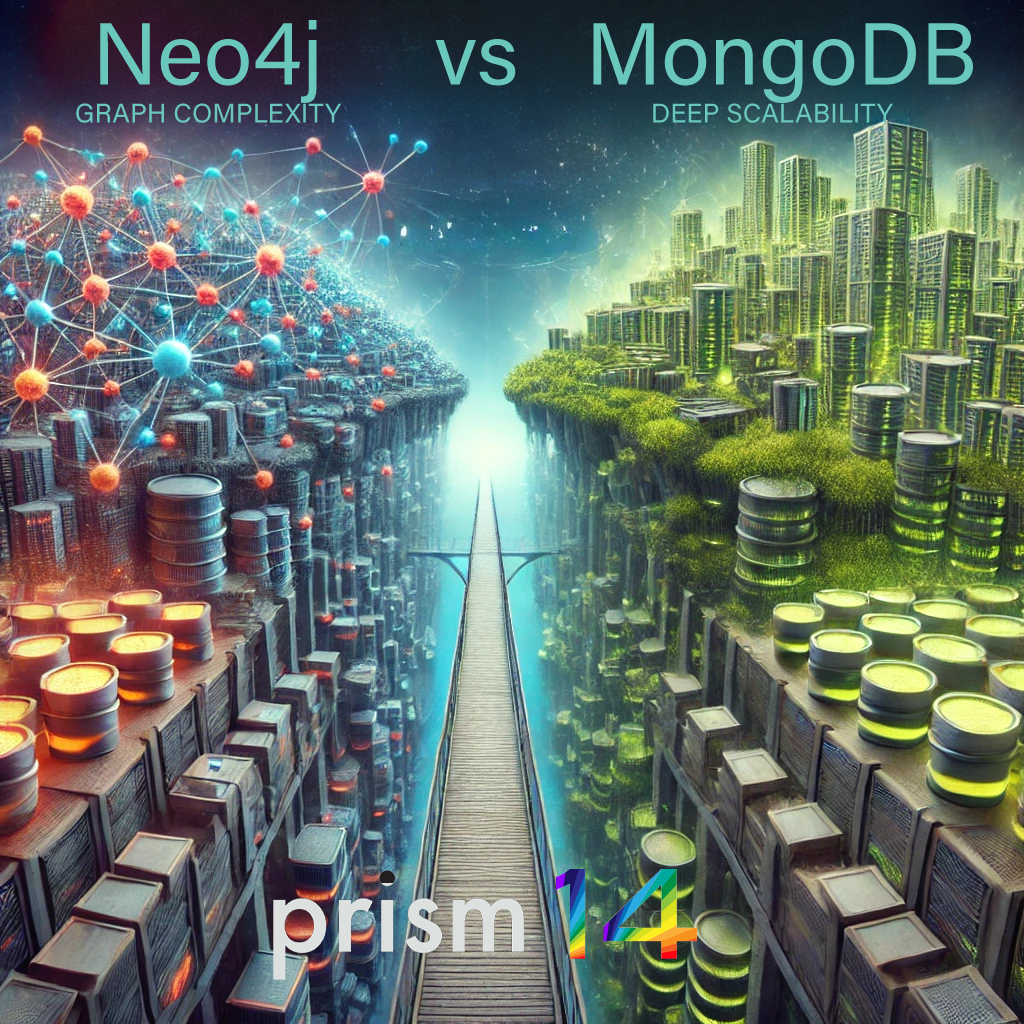Neo4j vs. MongoDB for GraphRAG: Navigating the Right Choice for Complex Graph Queries
Comprehensive Comparison of Neo4j, MongoDB, Apache, and Other Tools for GraphRAG Systems
Top 3 Applications of GraphRAG Systems Across Healthcare, E-Commerce, and Legal Fields
From native graph queries in Neo4j to document-centric scalability in MongoDB, we break down how to choose the best database for your Graph Retrieval Augmented Generation system.
When considering Neo4j vs MongoDB for a GraphRAG (Graph Retrieval Augmented Generation) setup, there are several key differences and considerations that could influence your choice:
1. Data Model
- Neo4j: Neo4j is a native graph database, specifically designed to store and query graph-structured data. It uses the property graph model, where data is represented as nodes (entities) and edges (relationships). This structure makes Neo4j highly optimized for traversing relationships between nodes, which is key in GraphRAG when building knowledge graphs or querying large graphs efficiently.
- Best For: Use cases that involve complex relationships, deep graph traversals, or heavy graph queries.
- MongoDB: MongoDB is a NoSQL document database that can store data in a JSON-like format (BSON). It can support graph-like structures but does so using embedded documents or references between collections. While it supports graph use cases to some extent, it is not optimized for deep graph traversals.
- Best For: Scenarios where the primary need is document storage with occasional graph-like queries.
2. Query Language
- Neo4j: Uses Cypher, a graph query language specifically built for handling complex graph queries and traversals. It is expressive and optimized for graph-based data interactions, making it well-suited for building and querying knowledge graphs in GraphRAG systems.
- MongoDB: Uses MongoDB Query Language (MQL), which is designed for document retrieval. MongoDB supports the $graphLookup stage in aggregation pipelines for graph-like queries, but it is not as powerful or intuitive as Cypher when working with deep, interconnected data structures.
3. Performance in Graph Queries
- Neo4j: Excels in graph traversal and pathfinding queries due to its native graph storage and optimized query execution. For example, when working with knowledge graphs or social network analysis where relationships are deeply nested or dynamic, Neo4j’s performance is significantly better.
- MongoDB: Suitable for simple relationships or when graph data is relatively shallow. However, when it comes to complex graph traversals, MongoDB’s performance tends to lag behind Neo4j because it lacks the optimizations for graph operations.
4. Scalability
- Neo4j: Traditionally, Neo4j was less scalable for large, distributed systems, but with the introduction of Neo4j Aura and Neo4j Fabric, it has become more capable of handling large-scale, distributed graph data. However, MongoDB still generally outperforms Neo4j in terms of scalability for horizontal scaling.
- MongoDB: Known for its horizontal scalability and ability to handle massive volumes of data across distributed systems. MongoDB’s architecture is well-suited for cloud environments and data partitioning, making it preferable if your GraphRAG needs to scale horizontally across large datasets with less emphasis on graph traversal.
5. Use Case in GraphRAG
- Neo4j: Ideal if your GraphRAG system relies on complex graph queries, such as multi-hop knowledge retrieval, dynamic connections, or deep relational data mining. Neo4j’s graph-native design and Cypher’s expressiveness allow you to traverse large and intricate knowledge graphs, which is essential for many advanced GraphRAG implementations.
- MongoDB: Better suited for document-centric use cases where graph queries are limited or shallow. MongoDB would be a good fit if your GraphRAG system stores large volumes of document data and occasionally needs graph-like queries, but isn’t heavily reliant on the graph traversal efficiency Neo4j offers.
6. Tooling and Ecosystem
- Neo4j: Neo4j has a rich ecosystem of tools for graph visualization and analytics (e.g., Neo4j Bloom) and integrates well with machine learning workflows. It’s commonly used in knowledge graph construction and AI-driven insights.
- MongoDB: MongoDB is widely adopted and integrates well into a variety of data pipelines, cloud ecosystems, and analytics frameworks. While it’s not graph-first, its flexibility with document storage is useful for a variety of applications.
Conclusion:
If your GraphRAG system is centered around complex graph traversal, knowledge graph queries, or deep relational data, Neo4j is the superior choice due to its graph-native infrastructure and optimized performance for graph data. However, if your needs are more document-centric with occasional, simpler graph queries, and scalability is a primary concern, MongoDB may be more suitable.
Comprehensive Comparison of Neo4j, MongoDB, Apache, and Other Tools for GraphRAG Systems
Top 3 Applications of GraphRAG Systems Across Healthcare, E-Commerce, and Legal Fields
More on Machine Learning and AI Fundamentals at Prism14
To get occasional updates from Prism14 and info directly in your inbox ==>
==> Subscribe to Prism14’s Update
Book an Appointment ==> Book Now to Learn or Integrate With Prism14

Leave a Reply